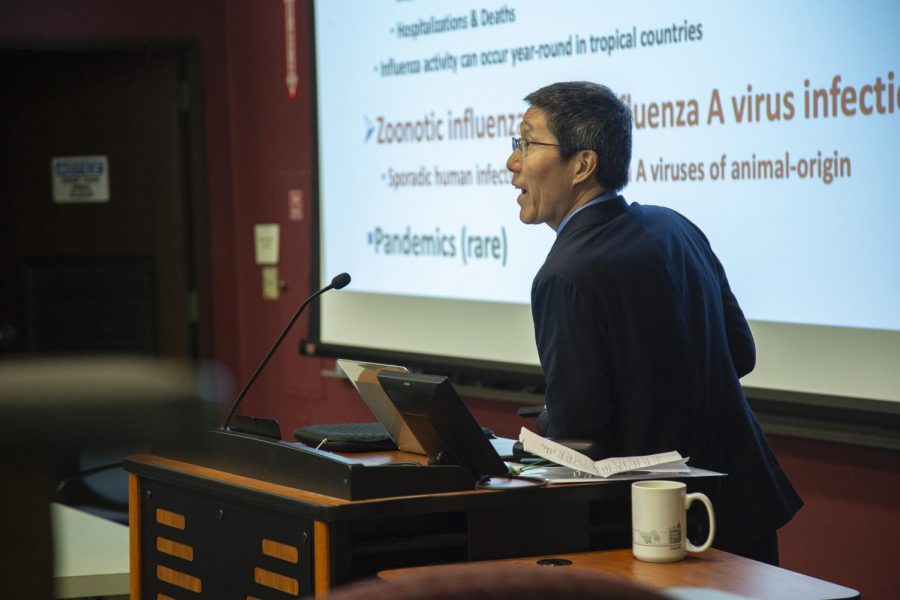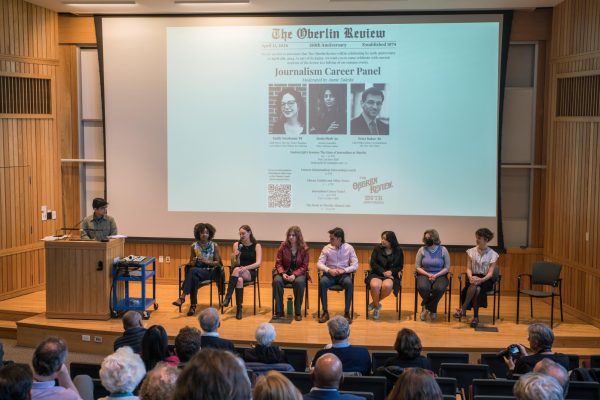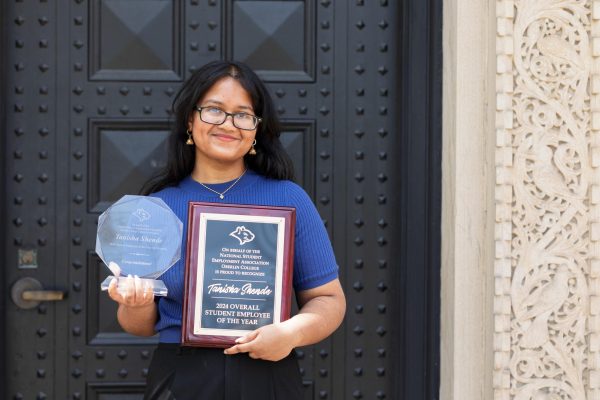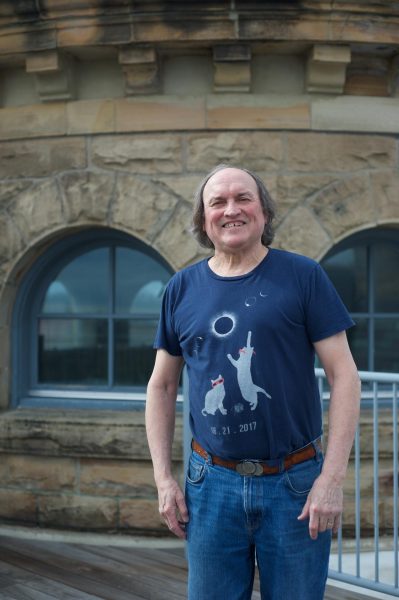OTC: Tim Uyeki, OC ’81, Chief Medical Officer, CDC Influenza Division
Dr. Tim Uyeki delivers his talk, “From Avian Influenza to Ebola & Public Health: Reflections of a Clinician and Epidemiologist” in King Building on Thursday.
Dr. Tim Uyeki, OC ’81, is the chief medical officer in the Influenza Division of the National Center for Immunization and Respiratory Diseases, Centers for Disease Control and Prevention in Atlanta, GA. Since 1998, Uyeki’s primary focus at the CDC has been on the clinical aspects, epidemiology, prevention, and control of influenza in the U.S. and worldwide. Uyeki visited campus on Thursday to discuss the possibility of integrating public health classes in the College curriculum as well as to give a talk titled “From Avian Influenza to Ebola & Public Health: Reflections of a Clinician and Epidemiologist.”
This interview has been edited for length and clarity.
You graduated from Oberlin in ’81 and majored in Biology. I was curious if that was where your interest in studying diseases came from or if that interest was something that built after Oberlin?
As a student at Oberlin, I did not have a specific interest in infectious diseases or going into medicine. I was not a pre-medical student. I was interested in ecology and environmental studies and I was one of the early student members of the Student-Faculty Environmental Studies program committee, long before there were classes in environmental studies at Oberlin. And so my interest was really in ecology and environmental health. I think that my interest in infectious diseases and public health evolved over time and was particularly stimulated by my interest in backpacking and the outdoors, which evolved after Oberlin through low-budget backpacking in developing countries. [This allowed me to] see different cultures in developing countries and get an idea of a lot of the challenges for global health. But I’ve been very fortunate to have various experiences over time that really then guided me or funneled me towards public health and particularly a global health career.
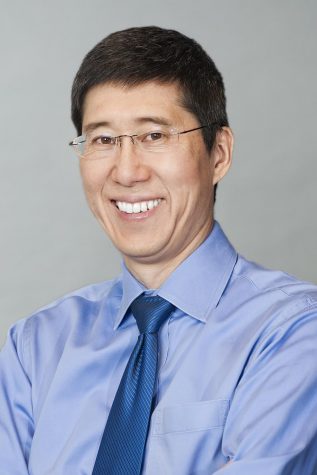
Could you describe and define what the field of epidemiology is and what it looks like?
Sure. On the basic level, it’s trying to address questions such as the who, what, where, why, and when, and trying to understand risk factors for disease with the goal of developing interventions to reduce disease. Basically, epidemiology is the study of diseases in populations, and there are many different aspects of epidemiology, but there’s sort of descriptive epidemiology and there are more sophisticated analytical studies. One can look at the epidemiology of infectious diseases as well as chronic diseases at any population level.
You mentioned that you specifically look at diseases that emerged through animal-human interface. Can you elaborate?
I’m interested in many different diseases, but I’ve done a lot of work at the animal-human interface; particularly, people who have exposures to poultry and specifically, poultry that is infected with avian influenza A viruses. In animal health, veterinary colleagues worry about animals getting diseases from humans, whereas in public health we worry about people getting infections that are coming from animals. So I have had this long standing interest in looking at mostly avian influenza A viruses, but also I’d been lucky to work on other infectious disease outbreaks.
There is an ongoing, very large and very challenging outbreak of Ebola virus disease in the Northeastern part of the Democratic Republic of the Congo. It is currently the second-largest Ebola virus disease outbreak ever. To date, there were about 3,175 cases which had been either confirmed or are deemed probable cases of which about 67 percent have died. This is unfortunately not under control, but this is another example of emerging infectious diseases caused by viruses that originally come from some kind of animal and spill over into the human population. As human populations encroach upon areas where we have much more exposure to various animals, there is potential for these kinds of events and outbreaks to occur. This is an ongoing challenge and obviously from the global public health perspective, we want to go in and control the outbreak.
Ideally, you want to prevent it in the first place. We want to monitor the situation and eventually have vaccines for all these different infectious diseases. But these kinds of challenges are only going to increase. And so, while the main interests or the main emphasis is to control the outbreak, what we’re really worried about is something blowing up much bigger to spill over, to cause a problem worldwide. An example of an ongoing pandemic that you don’t hear about so much in the United States these days, but in certain parts of the world is still very challenging, is the HIV epidemic, which is really a pandemic. A pandemic by definition is a global outbreak, and certainly HIV is a huge ongoing pandemic since it was recognized in the early ‘80s.
In public health, from the perspective of the infectious disease, we are worried about new viruses that emerge and take off in human populations. … The kinds of diseases that I’ve worked on are caused by viruses that can cause severe lung damage — so severe pneumonia and high mortality. These are the ones that have the potential to spread very rapidly through people coughing to their close contacts. That’s what keeps me up at night, worrying about these kinds of emerging infectious diseases.
In hearing you talk about your work, it’s clearly very international in nature. I’m wondering if there are particular challenges that you encounter while working in that international context?
My work is both sort of local in a national, domestic public health. I work on seasonal influenza, and it’s been my primary focus for 21-plus years. Every fall, winter, spring, we have outbreaks — epidemics of seasonal influenza A and B viruses in people, and it’s easily transmitted from person to person through coughing, for example. I have had a lot of experience in working on seasonal influenza worldwide, but also in different parts of the world. I’ve been fortunate to work with many people at many levels of government in many countries, particularly in Southeast Asia, but [also] in other countries. There are always lots of challenges. And they can be on many different levels.
In terms of public health, public health is organized differently in different countries. Worldwide, the two prominent global public health organizations are the World Health Organization headquartered in Geneva, Switzerland and the CDC where I work. There are always a lot of political challenges at every level. So, one just tries to do their best. Everything is based upon teamwork. You have to have very good coordination, collaboration, and most of all really good communication.
You spoke about being on the student-faculty committee that originally envisioned an Environmental Studies program here. So now as an alum, what do new resources for Environmental Studies students, such as the Adam Joseph Lewis Center, mean to you as somebody who was working on public health so many years ago at the same institution?
I think it’s really wonderful and exciting for many reasons. I am jealous of students’ opportunities now. It’s heartening to me to see this kind of progress. Environmental Studies has come a long way at Oberlin since I was a student many decades ago. That Oberlin college is considering integrating public health as an area of concentration into the curriculum is extremely exciting for me, because now I’ve really devoted my career to public health and I hope that I can contribute to moving this forward at Oberlin.


